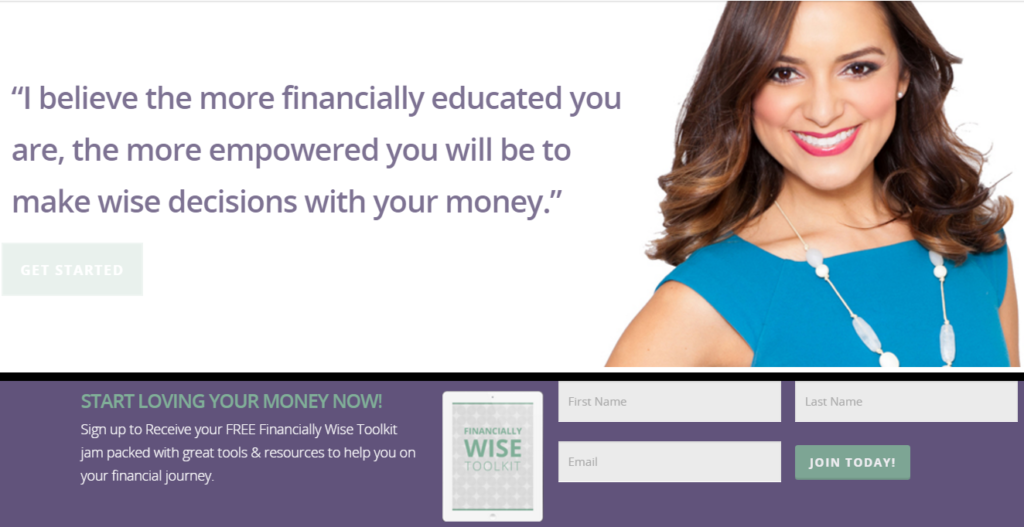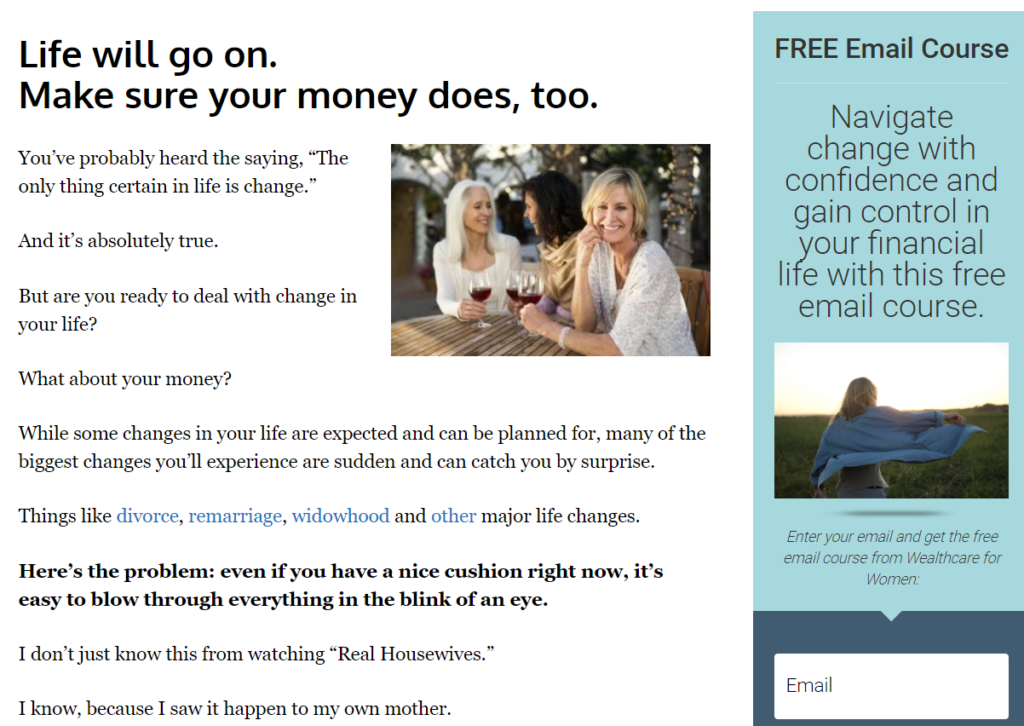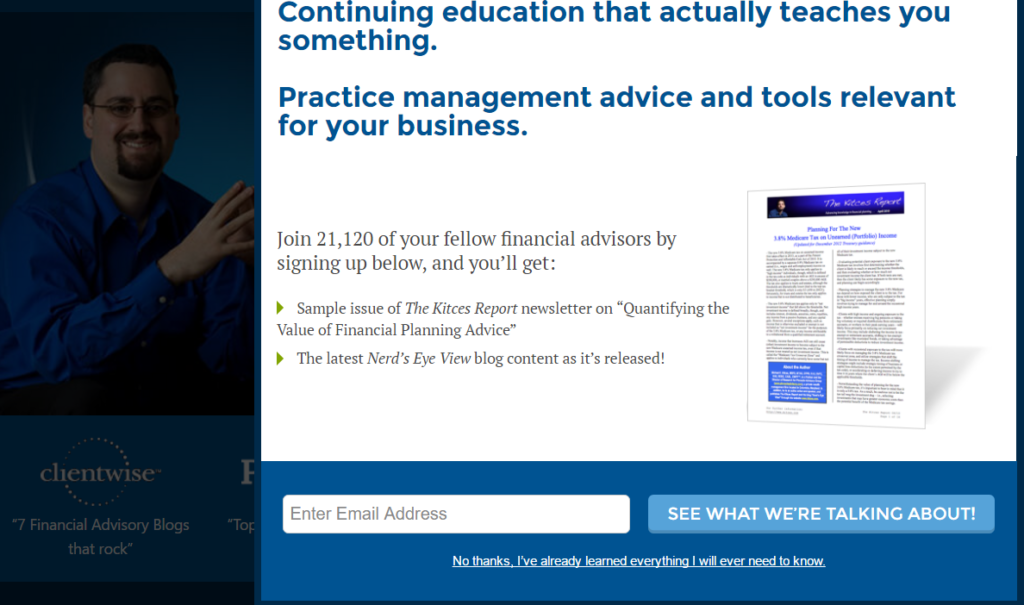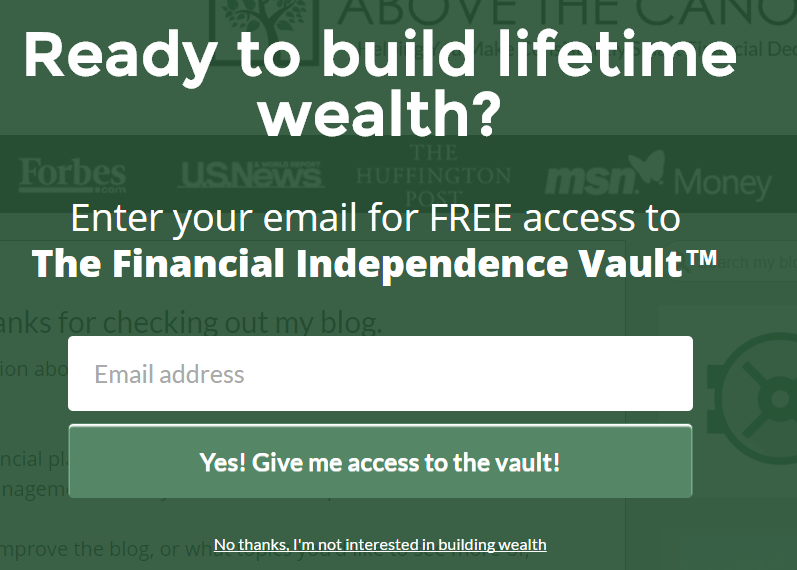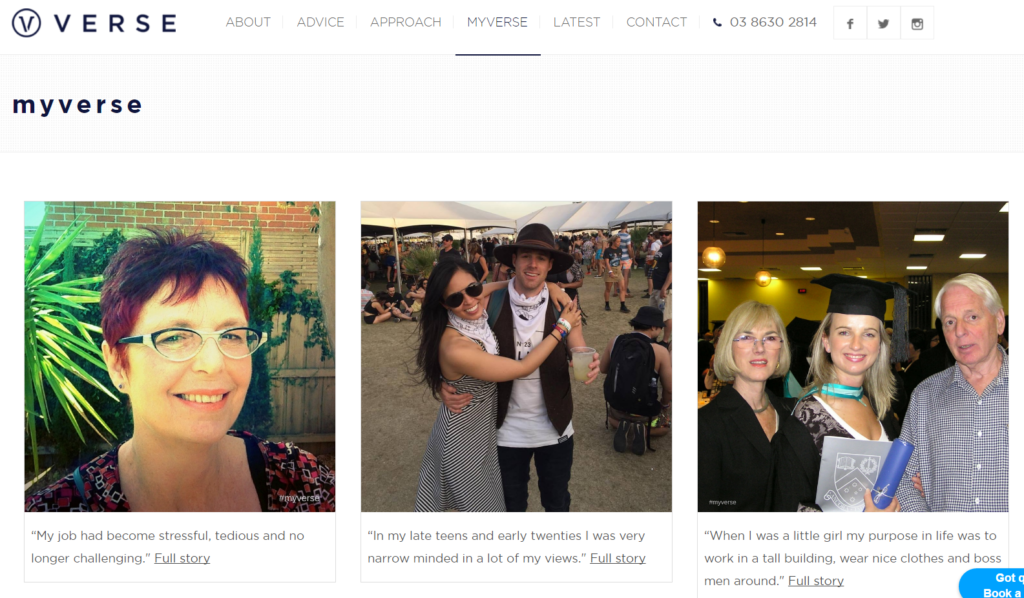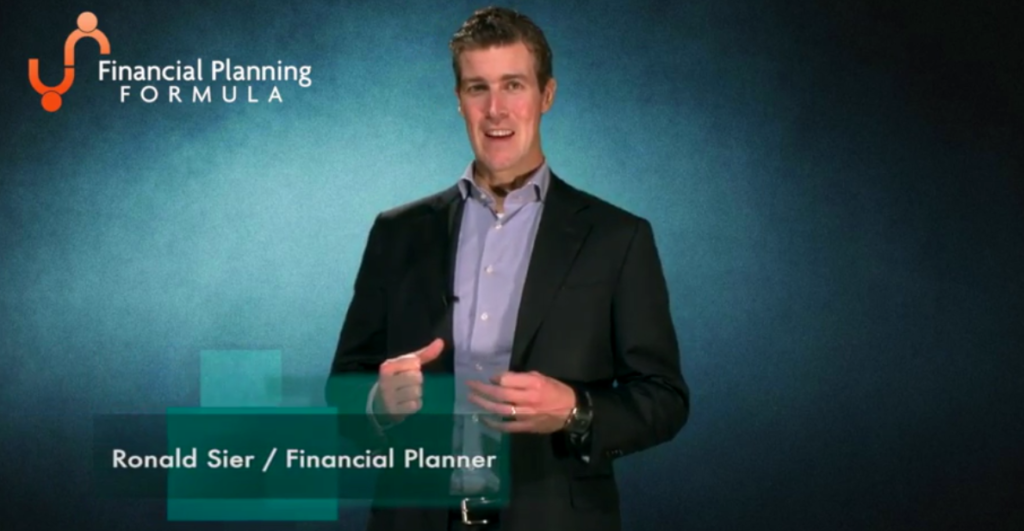Clients.
That’s what you want, don’t you?
And naturally, you want more for your financial planning service.
You network. You advertise. You spend lots of time on social media. You pay for social media. You pay for SEO. Heck, you even pay for radio or television time.
It’s costing lots and lots of time and money.
And sometimes it feels as if you’re pumping water down a leaky pipe.
In that situation, what’s the smarter move – pumping more water, or fixing the leak?
How to Fix the Leak
It’s just too scary, isn’t it?
You see all those fancy financial planners using their online presence to attract prospects and future clients.
Yes, I bet it’s crossed your mind to do it too. After all, you can’t ignore the internet anymore.
But to do it yourself? It’s just too damn scary.
There’s the (seemingly) huge cost. And how to even start, let alone how to find the time to do it? It’s beyond the reach of a financial planner like you, right?
I’m here to tell you something: the world of attracting financial planning prospects by using the web has changed.
It’s now affordable. It’s easy. You can do it.
In fact, you should do it.
Here’s why…
Why Smart Financial Planners Use the Web to Attract Prospects
If you’re a financial planner, you’ll be up against fierce competition.
Many other planners, banks, advisors and (online) wealth managers will be fighting for the attention of your audience, and from the outside looking in, little will distinguish you from them.
So, if you want to rise above the masses, you need to do something that’s different and that works.
Something that’s proven. Scientifically proven.
Introducing: The Reciprocity Principle.
It’s what persuasion-professor Robert Cialdini researched for about 30 years. You can read all about it in his best-selling book Influence: The Psychology of Persuasion.
OK, admittedly, the principle is as old as mankind. And there’s no doubt you’ve experienced it yourself. Nevertheless, smart financial planners know the principle works every single time. Here’s what it’s about:
The reciprocity principle suggests that people give back to you the kind of treatment that they’ve received from you earlier.
If you do something first, such as giving them an item of value, a piece of information, or a positive attitude, it will all come back to you. It’s as simple as that.
However, there is one single element that’s essential for this principle to work. It’s key to go FIRST:
- If you smile at your client, they give you a smile back.
- If you share a personal story, they give you a personal story back.
- If you give something valuable for free, they’ll pay you back later (by becoming a client).
That’s essentially the rule. Whatever it is that you would like to get from a situation, you can increase the likelihood that it will be forthcoming if you provide it FIRST.
The question is: How do you do this using your online presence?
What to Do Before Creating Your Free Gift
Before we start digging into the 6 incentives, just think about your prospect for a moment.
Because he or she has seen the same things a hundred times before:
- Financial planning gives you peace of mind
- With financial planning, you’ll achieve your financial goals
- Fee-only financial planner for truly unbiased advice
The good news is, if you do things a little bit differently, you’ll already stand out from the crowd.
However, if you want to be a winner AND guaranteed results, you must offer something genuinely tempting. Something of real value. Something your prospects would even pay for – if you weren’t so generously giving it away (remember the reciprocity-principle).
Your free gift can be:
- The source of much-needed inspiration when stuck at a roadblock (Example: 5 Little-Known Things Your Trusted Advisor Won’t Tell You)
- The promise to solve an urgent problem or soothe a nagging pain (Example: How the Government Gambles with Your Money: 3 Ways to Protect Yourself)
- The chance to rapidly expand existing knowledge on a topic of strong interest and relevance (Example: The Shocking Truth about Mutual Funds)
- The direction needed to achieve a much-desired goal (Example: Get Rid of Your Investment Worries Once and for All)
If your average financial planning prospect thinks your free online gift is something they simply must have, you’re on the right track.
The only problem?
Most planners really don’t know what to do. And if they know, they still have the problem of deciding what form their free gift should take.
If you want to receive the free incentive that is used to atrract 100+ financial planning prospects in 24 hours, please sign up for the free mini course by clicking the button here below:
Get Your Free Mini Course Here
You’ll receive 3 videos the next coming 3 days. And it’s totally free. No strings attached.
6 Free Gifts That’ll Create a Tidal Wave of New Clients
You must know that in the online marketing world, the free gift (also known as the sign-up bribe, because prospects will leave their email address for the free value you’re giving) is rarely known in the financial planning world. That’s why if you’re a little creative, you’ll rise above the masses instantly.
Fortunately, a number of free gifts are available for you right now, and are by definition valuable for your target audience.
The following six real-life examples will get your creative juices going, and get your prospects drooling to sign up and make an appointment with you.
#1: The Money Toolkit
A toolkit is a great gift if you already have some useful resources in your content bank – interactive checklists, and worksheets – and would like to package them all together into a single resource.
This gift is exciting because it gives your prospects the opportunity to tackle a bigger problem by giving them all the tools they require in a single download. In doing so, they’re seeing the depth and breadth of your knowledge and they’re experiencing first-hand the power of your approach.
A great example is Brittney Castro’s “Financially Wise Toolkit”, which gives new prospects the basic tools to help them on their financial journey.
The Toolkit includes:
- The 9 Steps to Becoming a Financially Wise Woman eBook
- Dream Worksheet
- Life Stage Checklists
- Financial Knowledge Quiz
TIP: You can have your prospects download everything in a .zip file, but because of the heavy file size, you might be better off using landing page software like LeadPages, OptimizePress, Unbounce, or Hubspot to direct your prospects to a single page where they can access your material more easily.
#2: The Welcome Email Series
This email series is the friendly usher that welcomes newly opted-in prospects to their seats, and prepares them for what your financial planning service has to offer.
This gift explores some important aspect of your expertise in bite-sized pieces. It’s delivered over several days or even weeks and is far more manageable for your prospects than a content-heavy white paper or blueprint.
The goal is to keep your prospect engaged the moment she receives the first email in the series and to lead her though the key principles – instead of hoping she’ll explore your website under her own steam.
Delivered on autopilot, your prospect is automatically sent an email based on a given frequency, with each email building on the one before.
Wealthcare for Woman’s founder and financial planner Russ Thornton, offers a free email course to help woman dealing with (financial) changes in their life. It’s a great example.
TIP: Write useful and engaging content, whether unique to the free gift or already published on your website, that you can easily break into pieces. On the technical side, you’ll need an email newsletter service, e.g. Mailchimp and Convertkit, with an autoresponder feature ($10-20/month).
#3: The Persuasive Guide
A guide is a concrete plan that breaks down a major process into small and digestible chunks.
Usually in PDF or ebook format, this free gift is a framework the reader can follow to achieve a specific result. Each chapter or module tackles a step or subtopic by exploring the underlying concepts or revealing the tasks that need completing before moving to the next stage.
Depending on the depth of the topic, a guide’s length may range from 10-20 pages. Try to have a clear outline upfront to help you structure your blueprint.
As a bribe, it’s a lot more intensive than an email series or a cheat sheet, but less bulky than a toolkit. If you want to showcase your expertise in a self-contained, easily downloadable bribe, this is a great option.
Financial planning thought leader Michael Kitces provides “The Kitces Report” on “Evaluating Financial Planning Strategies and Quantifying Their Economic Impact”. It’s a guide for financial planners to quantify our “invisible” service called financial planning.
TIP: You can use your word processor or desktop publishing software to create an ebook. However, if you want to save loads and loads time on the design-part, use Baecon to create stunning guides in minutes.
#4: The Time-Saving Cheat Sheet
If your goal is to share inside information about finances or investments that can easily be overlooked or missed, create a cheat sheet.
Think of it as the key to a box of secrets that make your prospect instantly more productive or rapidly save time.
A cheat sheet is a highly practical reference guide that outlines and shares valuable data and shortcuts, often in a visual format that makes the retrieval of key information as efficient as possible.
This free gift is attractive to your prospect because it delivers a lot of information in a very concentrated form and can quickly prove its worth, perhaps saving them hours of effort.
Take a look at this for the “Financial Independence Vault”, founded by financial planner Grant Bledsoe. Grant is CEO of Above the Canopy.
It’s a perfect model for you to emulate:
The Vault includes:
- The Smart Budget Planner
- The Retirement Readiness Checklist
- The Definitive Small Business Guide to Retirement Planning
- The Ultimate Annuity Buyer’s Guide
- Six Secrets to Maximize Your Social Security Benefits
- 7 Ways to Lose Money with Bonds
TIP: You can use a cheat sheet tool like Cheatography to generate cheat sheets based on a default template.
#5: The Fascinating Case Study
Case studies are, in essence, success stories about people you have served. They are a great incentive, if you like to engage your prospects through characters and narrative instead of facts and explanations.
With case studies, you can dive into the lives of significant people, who you believe are great models or sources of inspiration for your future clients. You can talk about how they earned their wealth, but also what makes them tick, how they failed and got up on their feet again, and what they did to become successful.
You can also showcase customers who’ve experienced success using the methods you teach with your financial planning service.
Case studies are fantastic because they create a sense of community and they are grounded in reality. You’re showing your prospect that other people are just like them, which is great for social proof.
So, how do you turn a case study into an enticing free gift? You have several options:
- Compile it into an ebook and tell the story in words.
- Conduct interviews and package up the (audio) files as a simple download.
- Create videos profiling the people or brands you want to feature and make them available on a hidden or subscriber-only page on your site.
The exact medium will depend on your site, the availability of the people involved in your case study, and your audience’s preferred content format.
For example, James O’ Reilly and Corey Wastle from Verse Wealth published several client-stories on their website, which shares case studies and personal stories of people who have experienced their service:
TIP: When interviewing your clients, ask about the START of their career. Why? Because they LOVE to tell their own story, their problems, their successes, you name it. Just ask about how it all started.
#6: The Sexy Video Course
Fortunately, for people who prefer talking to writing, incentives don’t always have to be in written form.
If you’re more of a visual person and thrive on interaction, the video tutorial may just be the perk to get your groove on.
A video bribe can be a single video that covers a topic in depth, or a series of videos tackling different subtopics. They can be a live recording of you presenting the information to camera, or a slideshow presentation with you providing the voiceover.
The following is an example:
In preparation for my online course Financial Planning Formula, I launched a 3 video series for a limited time that teaches financial planners about the fundamentals of online marketing and how to sell financial planning online. And how do you get access to all of this valuable content?
Right, by giving your email address.
Here’s my Personal Incentive For You
Now, I understand that it can be really difficult to actually go out and implement this kind of incentives, especially if you haven’t tried it before.
That’s why I’m offering a free mini-course.
Here’s what’s inside:
3 videos about “How to Quadruple Your Financial-Planning-Prospect-List in 24 Hours”:
- Video #1: How to Explain the Big Benefit of Financial Planning
- Video #2: The One and Only Thing You Need to Sell (and It’s Not Financial Planning)
- Video #3: How to Get 100+ Prospects in 24 Hours (seriously)
The best news?
It’s totally FREE.
Swipe and deploy the tips in the videos, and you’ll learn science, strategy, and tactics to grow your prospect-list like crazy. Just sign up after clicking the button here below, and you’ll receive the videos. No strings attached.
Get Your Free Mini Course Here
Talk soon,
Let’s make financial planning matter,
Ronald Sier



